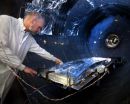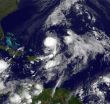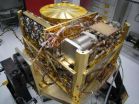(Press-News.org) Educational policy is controversial: positions on achievement gaps, troubled schools and class size are emotionally charged, and research studies often come to very different conclusions.
But what if there was a new way of looking at the problem -- a way that treats education as a complex system (taking into account all interactions) and uses computer modeling and network analysis to provide a comprehensive look at the outcomes of policy choices?
Researchers at Northwestern University's McCormick School of Engineering and Applied Science and School of Education and Social Policy argue in an article published Oct. 1 in the journal Science that such an approach can help integrate insights and better inform educational policy. By breaking down policies into simple rules and computationally modeling them under different conditions, professors Uri Wilensky and Luis Amaral have found a promising new way to understand policy issues such as school choice and student tracking.
Wilensky, professor of learning sciences and electrical engineering and computer science, and Amaral, professor of chemical and biological engineering, authored the paper with several of their current and former graduate students and colleagues. The article grew out of a three-year, National Science Foundation-supported project they conducted.
In the article, Wilensky and Amaral argue that current educational policy research often falls into two categories: effects-based, which focuses on quantifying "what works" in education, and mechanism-based research, such as ethnographies, case studies and laboratory experiments that focus on individuals and "how it works."
But to get a complete view of education, researchers must use methods that integrate insights about micro-level processes (the student) with macro-level outcomes (student achievement). To do this, Wilensky and Amaral look at education as a complex system: a system with many interacting parts that only can be understood by examining the interactions of the parts and the networks that connect them. Knowledge of the parts alone doesn't lead to understanding of the whole system.
"Considering all the published research, it is hard to draw conclusions on educational policies," Wilensky said. "In this modeled world you can simulate all kinds of alternative policies and conditions and then better understand their implications."
Engineers and scientists conducting research on complex systems use what is called agent-based modeling to simulate, explore and predict such systems. Recently, social scientists have been developing and computationally simulating educational policy scenarios. This allows them to see how individual and group-level behaviors relate to system-wide outcomes.
In the article, the authors cite several other studies and their own research as evidence that this approach works. Wilensky and Amaral, along with Louis Gomez, formerly with Northwestern and now professor of learning sciences and policy at the University of Pittsburgh, and Spiro Maroulis, Wilensky's former graduate student and now a visiting professor and postdoctoral fellow at Northwestern's Kellogg School of Management, have used a modeling approach for a hot educational issue: school choice.
They use Wilensky's NetLogo agent-based modeling software along with student and school-level data from Chicago Public Schools to better understand the sensitivity of district-level outcomes, such as mean achievement to differences in the ways students choose schools. In one modeling scenario, they allowed for schools with a greater ability to increase student test scores to enter the district and found that when students valued a school's test scores much more than its geographic proximity, it could constrain improvement in the district. That is because it made it more difficult for new schools to survive.
"The schools that initially look very good get swamped, and they get overwhelmed and tend to close," Wilensky said. Such research could pave the way for new school-choice programs.
In another study, Wilensky, Amaral and their students used surveys to look at friendship networks among high school students. "We were able to use algorithms developed by Amaral to separate out sub-communities -- the friendship groups -- and figure out who were the key pivotal players and how they affected the group," Wilensky said.
The researchers examined groups comprised of both high achievers and low achievers. They found that in a group that contained mostly high achievers, the low achievers tended to improve. In a group that contained mostly low achievers, the high achievers tended to do worse. Moreover, students in the high-achieving friendship groups improved their scores more than students in the low-achieving groups.
"Ultimately, a complex systems-based approach provides a new way of looking at educational and social policies and should be incorporated into graduate training programs," Wilensky said.
"It's a new form of argument that will help resolve disagreements," he said. "By breaking down a complex system and figuring out the rules that generate it, we can grow the system in the computer and create models that can guide us towards leverage points that will help us determine which policies will work."
INFORMATION: END
The sudden death of bee colonies since late 2006 across North America has stumped scientists. But today, researchers may have a greater understanding of the mysterious colony collapse disorder, said a Texas Tech University biologist.
Shan Bilimoria, a professor and molecular virologist, said the bees may be taking a one-two punch from both an insect virus and a fungus, which may be causing bees to die off by the billions.
Bilimoria is part of a team of researchers searching for the cause of the collapse. Led by research professor Jerry Bromenshenk from the University ...
COLUMBIA, Mo. – Diagnostic ultrasounds are the most widely used medical tests in the world. Though the technology is more than 50 years old, scientists continue to discover new uses for it, ranging from more targeted cancer treatments to liposuction. As the technology becomes more complex, a sonographer's skill level is even more important. Now, researchers at the University of Missouri may have found one of the keys to becoming a successful sonographer: spatial ability.
Doug Clem, clinical assistant professor of MU's diagnostic ultrasound program in the MU School ...
NASA's James Webb Space Telescope continues to make significant progress, successfully completing a series of sunshield vent tests that validate the telescope's sunshield design.
"While adequate venting is a design consideration for all spaceflight hardware, this was a particularly unique challenge for the sunshield given the large volume of trapped air in the membrane system at launch," said Keith Parrish, Webb telescope sunshield manager at NASA's Goddard Space Flight Center in Greenbelt, Md. "From the beginning of its development venting features have been a critical ...
A woman's race/ethnicity and socioeconomic status impact whether health care providers recommend one of the most highly effective forms of contraception, a UCSF study confirms. The results also indicate that the interaction of both factors plays a role in clinicians' decisions.
Recommendations by health care providers previously have been found to vary by patients' race and socioeconomic status, contributing to health disparities, according to the researchers. The team investigated the effect of these factors on recommendations for contraception.
Study results appear ...
When people are rejected by peers, they often lash out. In children, that aggression occasionally takes horrifying directions, leading to school shootings or other deadly acts. Researchers in the Netherlands found that some children are more likely than others to lash out in response to acute peer rejection: children who already feel like outcasts.
"It was inspired by the fact that we had these school shootings and wondered what the most important feature of these kids could be," says Albert Reijntjes of Utrecht University, who cowrote the study with five other psychological ...
RICHMOND, Va. (Oct. 8, 2010) – An international team of researchers has discovered a new class of highly electronegative chemical species called hyperhalogens, which use superhalogens as building blocks around a metal atom. The new chemical species may have application in many industries.
Researchers from Virginia Commonwealth University, McNeese State University in Lake Charles, La., and the University of Konstanz in Germany report their discovery in the Oct. 6 international chemistry journal Angewandte Chemie International Edition. The journal designated the paper as ...
At 11 a.m. EDT on Oct. 8, Otto strengthened into a hurricane, becoming the eighth hurricane of the Atlantic Ocean season. NASA's Aqua satellite and the NOAA GOES-13 satellite captured images of Otto as he intensified.
Otto had maximum sustained winds near 75 mph, and the National Hurricane Center in Miami, Fla. noted that some strengthening is possible before it weakens on Saturday, Oct. 9. Otto was located about 445 miles south of Bermuda near 25.9 North and 64.0 West. It was moving east-northeast near 17 mph, and had a minimum central pressure of 979 millibars.
On ...
The Sample Analysis at Mars (SAM) instrument suite has completed assembly at NASA's Goddard Space Flight Center in Greenbelt, Md., and is nearly ready for a December delivery to NASA's Jet Propulsion Laboratory (JPL), Pasadena, Calif., where it will be joined to the Curiosity rover. SAM and Curiosity are set to fly on the on the upcoming Mars Science Laboratory (MSL) rover mission scheduled for launch in the fall of 2011.
SAM will become an automated, mobile laboratory as it is carried across Mars by the rover when the mission arrives at the Red Planet in 2012. Together ...
DALLAS – Oct. 12, 2010 – Researchers at UT Southwestern Medical Center have created an experimental vaccine against beta-amyloid, the small protein that forms plaques in the brain and is believed to contribute to the development of Alzheimer's disease.
Compared with similar so-called DNA vaccines that the UT Southwestern researchers tested in an animal study, the new experimental vaccine stimulated more than 10 times as many antibodies that bind to and eliminate beta-amyloid. The results appeared in the journal Vaccine.
Future studies will focus on determining the ...
Researchers at the University of Illinois at Chicago College of Medicine have found how gene expression that may contribute to drug resistance is ramped up in unusual types of breast tumors. Their findings may offer new therapy targets.
The study is published in the Oct. 8 issue of the Journal of Biological Chemistry, where it is designated a paper of the week.
Approximately 70 percent of breast cancers express the estrogen receptor. These "ER-positive" tumors usually respond to hormone-related therapies, such as tamoxifen or aromatase inhibitors. But not always.
"We ...



